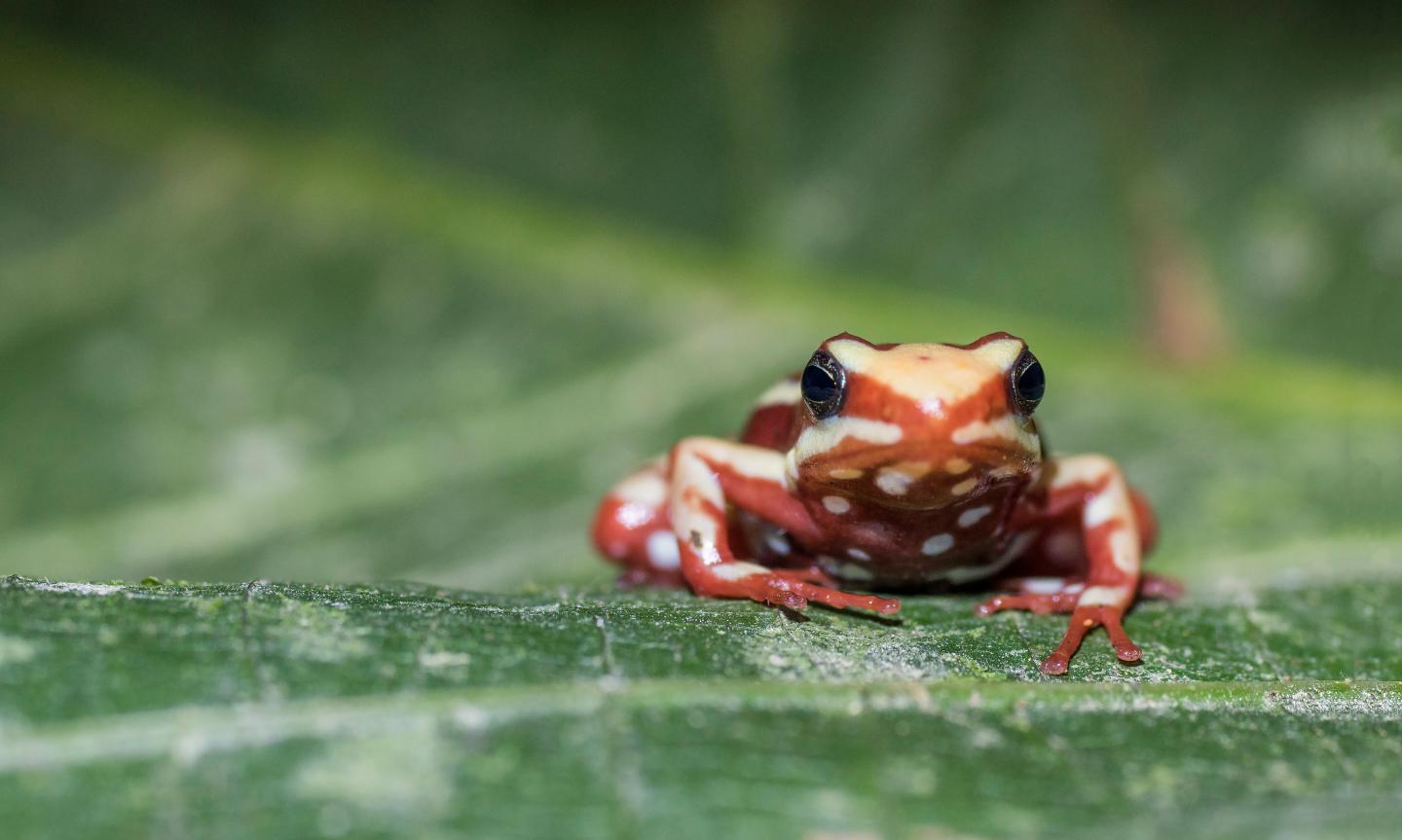あなたはここにいる:ホーム > お知らせ > 業界動向 > Poison Frogs Evolved...
著者: アップロード:2017-09-26 閲読回数:
Brightly colored but capable of dark deeds, poison frogs accumulate or generate toxic chemicals that are harmful to predators, but tolerable to the frogs themselves. For example, many poison frogs have evolved resistance to their own neurotoxins by swapping out a few amino acids in their neurotransmitter receptors. Some amino acid replacements have altered toxin-binding sites, thereby imparting target-site insensitivity. Such replacements have led to tetrodotoxin resistance in poison frogs and other poison animals.
Even more impressive, a new report indicates, some poison frogs managed to retune a neurotransmitter receptor so that it not only became insensitive to a particular toxin, called epibatidine, but also remained sensitive (or regained sensitivity) to an essential neurotransmitter, acetylcholine. The new research, led by scientists at The University of Texas at Austin, suggests how a subgroup of poison frogs came to rely on epibatidine, which binds to receptors in their predators’ nervous systems, causing hypertension, seizures, and even death.
The researchers discovered that a small genetic mutation in the frogs, a change in just three of the 2,500 amino acids that make up the receptor, prevents the toxin from acting on the frogs' own receptors, making them resistant to its lethal effects. Not only that, but precisely the same change appeared independently three times in the evolution of these frogs.
Interestingly, the receptor's functionality was maintained by additional amino acid replacements that differed among poison frog lineages, allowing them to resist their self-generated toxins, while still maintaining normal operation of their target neurotransmitters.

Details appeared in the journal Science, in an article entitled, “Interacting amino acid replacements allow poison frogs to evolve epibatidine resistance.” By exploring the molecular-level changes that culminated in epibatidine resistance, the article suggests how evolution can solve complex problems in systems biology that may otherwise seem impossible.
“We suggest two possible evolutionary pathways for acquisition of toxin resistance,” wrote the authors of the Science article. “In the first, initial replacements may provide a small selective benefit of resistance yet carry some physiological cost in receptor function. We speculate that yet unidentified mutants in the poison frog nAChR [nicotinic acetylcholine receptor] sustained receptor functionality—i.e., by inducing nAChR expression changes—until other replacements such as F106L evolved to rescue receptor sensitivity to ACh. In the second possible trajectory, certain mutants already present in the gene pool provide a genetic background in which resistance arises without cost.”
The new research—showing how certain poison frogs evolved to block epibatidine while retaining use of receptors the brain needs—gives scientists information about epibatidine that could eventually prove helpful in designing drugs such as new pain relievers or drugs to fight nicotine addiction.
For decades, medical researchers have known that epibatidine also can act as a powerful nonaddictive painkiller. They've developed hundreds of compounds from the frogs' toxin, including one that advanced in the drug-development process to human trials before being ruled out due to other side effects.
"Every bit of information we can gather on how these receptors are interacting with the drugs gets us a step closer to designing better drugs," said Cecilia Borghese, a co-first author of the paper and a research associate in UT Austin's Waggoner Center for Alcohol and Addiction Research.
Understanding how very small changes affect the behavior of the receptor might be exploited by scientists trying to design drugs that act on it. Because the same receptor in humans is also involved in pain and nicotine addiction, this study might suggest ways to develop new medications to block pain or help smokers break the habit.
In the current study, the researchers found that the changes that impart toxin resistance without sacrificing ordinary nAchR function occur in parts of the receptor that are close to, but don't even touch epibatidine. "The most exciting thing is how these amino acids that are not even in direct contact with the drug can modify the function of the receptor in such a precise way," Borghese emphasized. The healthy compound, she continued, "keeps working as usual, no problem at all, and now the receptor is resistant to epibatidine. That for me was fascinating."
Borghese is part of a research team that includes David Cannatella and Harold Zakon, professors in the Department of Integrative Biology, as well as Rebecca Tarvin, a postdoctoral researcher at UT Austin and another co-first author on the Science paper. Working with partners in Ecuador, the team collected tissue samples from 28 species of frogs—including those that use epibatidine, those that use other toxins, and those that are not toxic.
Tarvin and her colleagues Juan C. Santos from St. John's University and Lauren O'Connell from Stanford University sequenced the gene that encodes the particular receptor in each species. She then compared subtle differences to build an evolutionary tree representing how the gene evolved.
"Being toxic can be good for your survival—it gives you an edge over predators," noted Tarvin. "So why aren't more animals toxic? Our work is showing that a big constraint is whether organisms can evolve resistance to their own toxins. We found evolution has hit upon this same exact change in three different groups of frogs, and that, to me, is quite beautiful."